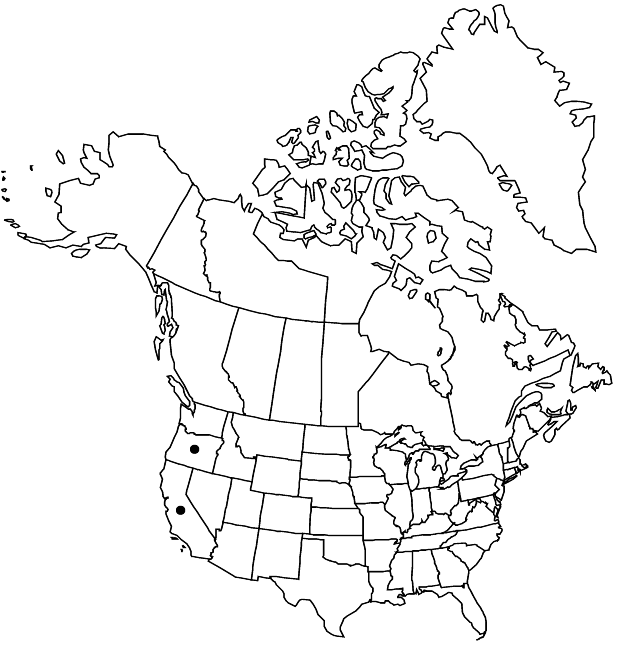Dudleya farinosa
New N. Amer. Crassul., 15. 1903 ,.
Caudices (in age decumbent or pendent), branching apically, (cespitose), 10–60 × 1–3 cm, axillary branches absent. Leaves: rosettes (1–)3–5, not in clumps, 15–30-leaved, 4–10 cm diam.; blade gray-green, becoming reddish, ovate-oblong, 2.5–6 × 1–2.5 cm, 3–6 mm thick, base 1–2.5 cm wide, apex acute, surfaces sometimes farinose, not glaucous. Inflorescences: cyme 3–5-branched, compact, flat-topped; branches not twisted (flowers on topside), simple or bifurcate, (1–4 cm wide); cincinni 3–5, 3–11-flowered, circinate, 1–3.5 cm; floral shoots 10–35 × 0.3–1 cm; leaves 20–35, spreading, cordate-ovate, 10–25 × 10–20 mm, apex acute. Pedicels erect, not bent in fruit, mostly 1–3 mm. Flowers: calyx 5–8 × 5–6 mm; corolla loosely tubular, not tightly 5-gonal, free margins of each petal usually not connivent to adjacent petals; petals connate 1–2 mm, pale yellow, 10–14 × 3–4 mm, apex acute to obtuse, tips often outcurved; pistils connivent, erect. Unripe follicles erect. 2n = 34.
Phenology: Flowering summer.
Habitat: Cliffs and banks near coast
Elevation: 0-600 m
Discussion
Plants of Dudleya farinosa in southern Oregon, which is the northern part of the range (D. septentrionalis), are very similar to those at the type locality, on the Monterey Peninsula; in those areas D. farinosa appears to be the only diploid species. Plants of the intermediate coast (such as D. eastwoodiae), also diploid, are somewhat different and in some ways seem to approach the diploid D. cymosa, which does reach the coast there.
The petals of Dudleya are convolute, each petal has one edge exposed and the other covered by the next petal. Generally in subg. Dudleya each petal is somewhat folded along the midline, with its exposed edge tightly connivent to the inner edge of the next petal, the petals together forming a tight pentagonal tube. In typical D. farinosa, each petal is less folded and more nearly flat, its exposed edge usually not connivent to the adjacent petal but somewhat separated from it, and the corolla thus more loosely tubular. In the northern part of the range, the corolla is often nonconvolute, a rare exception to the typical condition in the genus.
Selected References
None.
